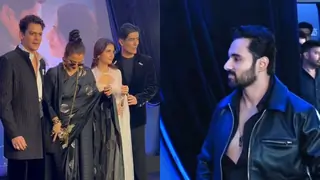The south Indian classical tradition has two similar sounding names, Carnatic or Karnatak. Though Carnatic is derived from Karnatak (or Karnata), it signifies a very different geographical region during the British empire.
With the fall of Vijayanagar empire entire south India witnessed a period of anarchy. The name used for the part of Vijaynagar to the north of the Ghats was Karnata. The Muslim rulers called all of the geographical areas south of them as Karnata, which included areas north of the Ghats and south as well (Encyclopedia.org - Carnatic). The plains were then called Karnata Payanghat (lowlands) and the highlands were called Balaghat. This misapplication of the name karnata was carried a step further by the British, who called only the lower Karnata as Carnatic. Thus during the British Raj, Carnatic meant the region between Eastern Ghats and the Coromandel coast i.e. present day inland Tamilnadu rather than present day Karnataka.
When Aurangzeb conquered the area in 1672, he appointed Zulfikar Ali as the nawab of the Carnatic, with the capital at Arcot. With the weakening of the Mughal empire after the death of Aurangzeb, nawaab Saadet-allah (1710-1732) established independence. In 1801 Carnatic was transferred to the British in exchange for military protection and a portion of the revenues collected. In 1853 the nominal sovereignty was ended, by pensioning the Nawab.
Since the development of modern Carnatic music took place in the region that British called Carnatic, perhaps the British thought it appropriate to call it Carnatic Music. But historically the music started to deviate from northern tradition during Vijayanagar empire, who were based in Karnata(ka). Purandara Dasa, the PraPitamaha of the tradition wrote his krithis in Kannada language. Thus, the music was perhaps called Karnata Sangita in the courts of Mysore kings. Thus, interestingly we have two names, derived from the same original name applied to the tradition for totally different reasons. Both the names continue to be used, with Carnatic or Karnatic or Karnatik used more often in English and Karnataka Sangita used in the vernaculars. Change of spelling from C(arnatic) to K(arnati)k(/c) is because of the modern spelling of Karnataka.
Madras - The new center
Madras started as a small fishing village until the British took it to build a fort, St George, in 1639. In 1653 it became the seat of British power in the south and capital of Madras presidency. Just like the other cities built by British, Bombay and Calcutta, it became the center of learning and later of music.
Starting with early 20th century, Madras started to become as important as Tanjavur to Carnatic music. Many of the artists started moving to Madras attracted by the new patrons of music - the beauracracy of Madras presidency. In 1927, on the sidelines of All India conference of the Indian National Congress, All India Music conference was held in Madras. At this time it was decided to start a music academy in madras to promote classical music.
The Academy was formally inaugurated on the 18th of August, 1928 (The Inauguration), though the first music festival was held in 1927, December. The festival has been held in December every year since then. The festival became an important vehicle for the development of Carnatic music. Apart from established masters, the festival allowed new artists to show off their talents and many masters of 20th century started off in these festivals.
Violin - A successful adaptation
No other western instrument has been adapted to Carnatic (and Hindustani) music like the violin. The playing technique has been so well Indianized that no Carnatic vocal concert of today is conducted without violin accompaniment. It has completely replaced Vina, which was probably the accompaniment in early days.
The first carnatic musician to learn violin was the brother of Muthuswamy Dikshitar, Baluswamy Dikshitar(1786-1858). He was patronized by Manali Muthukrishna Mudaliar, interpreter to the British Governor, Pigot and introduced to the European orchestra (or the band), attached to the East India Company. He learnt violin for 3 years and used to play it in the court of Ettayapuram kings, as an accompaniment to vocal music. Varahappa Iyer, a minister in the Tanjore Maratha court, was close to the British Governor in Madras. He too learnt violin and adapted it to accompany vocal music.
Vadivelu (1810-1845) one of the Tanjavur quartet and direct disciple of Muthuswamy Dikshitar, was the most significant factor why violin has been so well adapted and has become so popular today. Vadivelu was appointed the Asthana Vidwan in the court of composer-king Swati Tirunal. His encouragement and patronage saw the violin being performed not only as an accompaniment to the voice, but also as an instrument that even played solo passages during a dance performance.
Adaptation of violin has involved many innovations in the way it was tuned, held and played. Carnatic music required the violinist to sit cross-legged on a platform. The violin was, therefore, balanced between the chest and the scroll held by the anklebone of the right foot. The tuning was changed to suit the lower pitch in which the vocalists sang. The changed bowing and posture produced all subtle nuances, gamakas, modulations and all the srutis.




















307